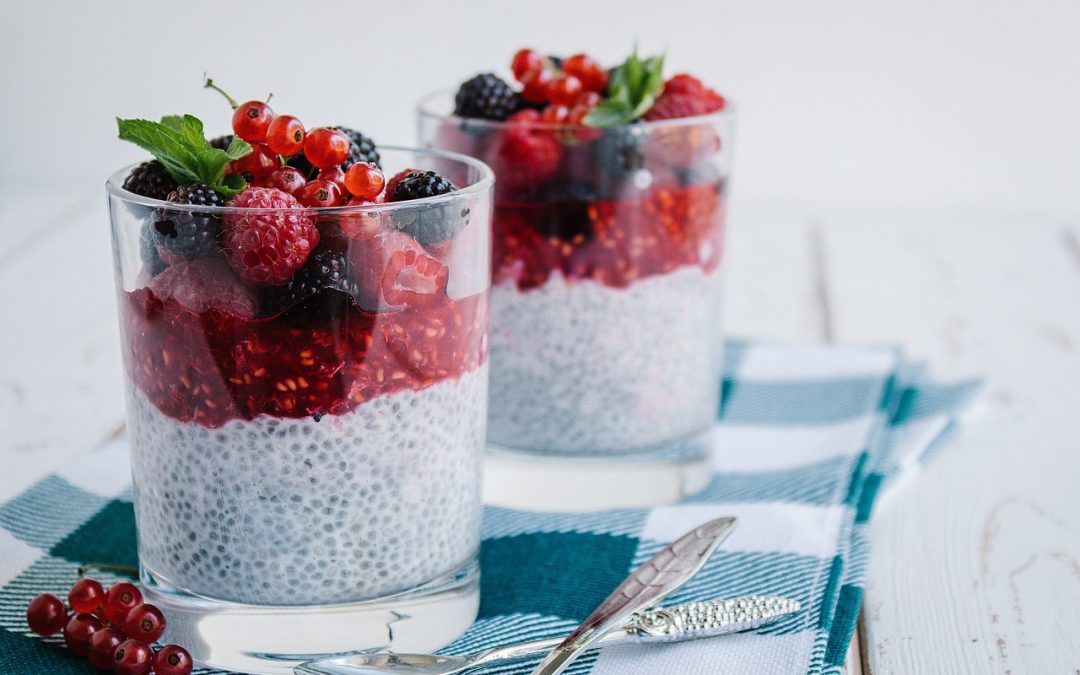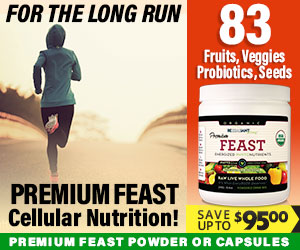In 2025, prioritizing nutrient rich whole foods is more important than ever for maintaining optimal health and preventing chronic diseases. These foods pack a punch of essential vitamins, minerals, and phytochemicals that your body craves. Whether you’re looking to improve your energy levels, strengthen your immune system, or simply enjoy vibrant health, incorporating a variety of nutrient rich whole foods into your diet is a smart, sustainable strategy. In this comprehensive guide, I’ll introduce you to the ten most powerful nutrient rich whole foods to include in your meals this yearâeach one a true nutritional powerhouse.
Table of Contents
- 1. Moringa
- 2. Kale
- 3. Wild-Caught Salmon
- 4. Quinoa
- 5. Beetroot
- 6. Avocado
- 7. Spirulina
- 8. Chia Seeds
- 9. Brussels Sprouts
- 10. Lentils
1. Moringa: The Miracle Tree of 2025
Nutritional Profile of Moringa
Moringa, often called the “miracle tree,” is one of the most nutrient dense plants known to science. It contains a wide spectrum of vitamins, minerals, amino acids, and antioxidants that support overall health. Just a small serving provides significant amounts of vitamin C, calcium, potassium, and protein, making it a potent addition to a diet focused on nutrient rich whole foods.
Research in 2025 continues to validate moringaâs impressive nutritional profile, with studies showing its benefits in reducing inflammation, supporting blood sugar regulation, and boosting immunity. Its leaves can be easily incorporated into smoothies, salads, or made into tea for a health boost.
If you’re interested in maximizing nutrient intake efficiently, adding moringa powder or fresh leaves is an easy, effective way to enhance your nutrient profile. Itâs especially beneficial for vegetarians or those looking to diversify their nutrient sources.
Practical Tips for Including Moringa
- Start with a teaspoon of moringa powder in your morning smoothie.
- Add chopped fresh moringa leaves to salads or soups.
- Look for high-quality moringa supplements to ensure purity and potency.
2. Kale: The Leafy Nutritional Powerhouse
Rich in Vitamins and Minerals
Kale remains an iconic superfood in 2025, celebrated for its exceptional nutrient content. This leafy green is a great source of vitamins A, C, K, and minerals like calcium and magnesium. Its dark, textured leaves pack antioxidants that help combat oxidative stress, which is linked to aging and chronic disease.
Recent data shows that regular consumption of kale may help improve heart health, support detoxification, and strengthen bones. Its versatility makes it an easy addition to salads, smoothies, and even chips.
Emphasizing the importance of variety, combining kale with other nutrient rich whole foods maximizes your nutrient intake and enhances overall health benefits.
Smart Ways to Prepare Kale
- Massaged kale salads with lemon and olive oil for better absorption.
- Blended into smoothies for a nutrient boost without overpowering flavor.
- Made into crispy kale chips as a healthy snack alternative.
3. Wild-Caught Salmon: Omega-3s & Protein
Oily Fish for Brain and Heart Health
In 2025, wild-caught salmon continues to be celebrated as a top nutrient rich whole food, primarily because of its high omega-3 fatty acid content. These essential fats support brain function, reduce inflammation, and promote cardiovascular health.
For many, including salmon in weekly meals is a delicious way to meet nutrient needs. It provides high-quality protein along with vital nutrients like vitamin D and selenium, both of which are crucial for optimal health.
Many nutritionists recommend choosing sustainably sourced wild salmon to maximize nutrient density while respecting environmental standards.
Cooking Tips and Recipes
- Grill or bake salmon fillets with lemon and herbs.
- Incorporate into salads or sushi bowls for a healthy protein source.
- Use canned wild salmon for quick, budget-friendly meals.
4. Quinoa: A Complete Protein Grain
Why Quinoa Is a Nutrient Dense Whole Food
Quinoa is a gluten-free, complete plant-based protein that is highly valued in 2025âs nutrient rich whole foods lineup. It contains all nine essential amino acids, making it a superb grain alternative for vegetarians and vegans.
Beyond protein, quinoa provides fiber, B vitamins, and minerals like magnesium and iron, which contribute to energy production and blood health. Its mild flavor and fluffy texture make it a versatile ingredient in many dishes.
Incorporating quinoa into your diet supports balanced nutrition and diversifies your intake of nutrient rich whole foods.
Cooking Tips and Nutritional Tips
- Rinse quinoa thoroughly before cooking to remove saponins.
- Use it as a base for salads, bowls, or side dishes.
- Pair with vegetables and healthy fats to enhance nutrient absorption.
5. Beetroot: The Super Root for Vitality
Health Benefits of Beetroots
Beetroots are a nutrient rich whole food that offers an impressive concentration of nitrates, antioxidants, fiber, and essential vitamins. Nitrates in beets have been linked to improved blood flow and lower blood pressure, making them a cardiovascular superfood in 2025.
Research indicates that beetroot consumption can enhance stamina and athletic performance. Its antioxidant properties also support detoxification and reduce inflammation.
Stir-fry, roasted, or juiced, beets are an easy way to access their health-boosting compounds daily.
Using Beets in Your Diet
- Include roasted beets in salads or grain bowls.
- Blend into smoothies or make fresh juice.
- Use beet greens as leafy vegetables for added nutrients.
6. Avocado: The Healthy Fat Powerhouse
Nutritional Highlights of Avocado
In 2025, avocados remain one of the most popular nutrient rich whole foods due to their high content of monounsaturated fats, fiber, vitamins E, K, and B5, as well as potassium. These nutrients support heart health, skin vitality, and gut function.
Eating avocado regularly helps manage cholesterol levels and provides sustained energy. Its creamy texture complements many dishes, making it a favorite for breakfast, lunch, or snacks.
Huge Discount on the Best Certified Organic Whole Food Supplement!
Adding slices or mash to your meals is a simple way to boost nutrient density and flavor simultaneously.
Practical Tips to Incorporate Avocado
- Spread avocado on whole-grain toast with toppings.
- Use it as a base for creamy dressings or dips.
- Mix into salads or smoothies for added richness.
7. Spirulina: The Blue-Green Algae Superfood
Why Spirulina Deserves a Place in 2025
As a nutrient rich whole food, spirulina is a blue-green algae packed with protein, B vitamins, iron, and powerful antioxidants like phycocyanin. Its nutrient density makes it a popular supplement and additive for those seeking to optimize their health.
Studies in 2025 have indicated spirulinaâs potential in boosting the immune system, reducing inflammation, and improving lipid profiles. Itâs a small but mighty food that supports overall wellness.
It can be easily powdered and added to smoothies, energy balls, or even water for a quick nutrient boost.
Usage Tips and Considerations
- Add one teaspoon of spirulina powder into smoothies or juices.
- Start with small doses to assess tolerance due to its potent flavor.
- Combine with citrus or sweeteners to balance its taste.
8. Chia Seeds: Tiny But Mighty
Chia Seeds as a Nutrient Dense Whole Food
Chia seeds are small but pack a big punch of omega-3 fatty acids, fiber, protein, calcium, and magnesium. They are a perfect addition to a balanced diet emphasizing nutrient rich whole foods. Their gel-like consistency when soaked makes them ideal for puddings and smoothies.
Research shows chia seeds can aid digestion, support weight management, and promote heart health. Since theyâre easy to add to many recipes, theyâre a must-have in 2025âs health-conscious kitchen kit.
Start your day with chia pudding or sprinkle them over salads to maximize their benefits.
Tips for Using Chia Seeds
- Soak 2 tablespoons in milk or plant-based milk for 10-15 minutes for a quick pudding.
- Add to yogurt, oatmeal, or smoothies for added fiber and Omega-3s.
- Use as an egg substitute in baking by mixing with water.
9. Brussels Sprouts: Cruciferous & Nutrient-Packed
Bone and Detox Support from Brussels Sprouts
Brussels sprouts are a member of the cruciferous vegetable family and are among the most nutrient rich whole foods available in 2025. They are especially high in vitamins C and K, fiber, and compounds that support detoxification processes and bone health.
Eating Brussels sprouts regularly can lower inflammation and reduce the risk of chronic illnesses. Their earthy flavor works well roasted, sautéed, or shredded raw into salads.
Incorporating these mini cabbages into your weekly meals is a straightforward way to promote nutrient density and overall wellness.
Creative Ways to Prepare Brussels Sprouts
- Roast with olive oil and garlic for a crispy side.
- Shred raw into salads for a crunchy texture.
- Sauté with bacon or nuts for added flavor.
10. Lentils: The Plant-Based Protein and Fiber Source
Health Benefits of Lentils
Lentils are a staple among nutrient rich whole foods because of their high fiber, protein, and micronutrient content. They help regulate blood sugar, support digestive health, and provide iron and folate for energy and cell function.
Modern diets in 2025 emphasize plant-based eating, and lentils are an excellent meat substitute due to their nutritional density. They are affordable, versatile, and can be used in soups, salads, and even veggie burgers.
Making lentils a regular part of your meals ensures youâre nourishing your body with essential nutrients while supporting sustainable food choices.
Preparation Tips and Ideas
- Simmer until tender for soups and purees.
- Use lentils in vegetarian or vegan patties.
- Combine with grains like rice or quinoa for complete protein dishes.
Frequently Asked Questions (FAQs)
1. What are the best ways to incorporate nutrient rich whole foods into a busy lifestyle?
Start simple by adding a handful of nuts or seeds to your breakfast, including a side of steamed vegetables, or blending nutrient dense greens into smoothies. Meal prepping and batch cooking can save time, making it easier to always have access to these healthful foods.
2. Why are nutrient rich whole foods important for maintaining health in 2025?
They provide a concentrated source of essential nutrients that support immune function, brain health, and chronic disease prevention. In 2025, with increasing environmental and health challenges, emphasizing nutrient rich whole foods ensures your body gets what it needs to thrive.
3. How can I identify the most nutrient dense whole foods?
Look for foods that provide high levels of vitamins, minerals, fiber, and antioxidants relative to their calorie content. Foods like leafy greens, berries, nuts, seeds, and wild-caught seafood are prime examples.
4. Can nutrient rich whole foods help with weight management?
Absolutely! They tend to be more filling and nutrient-dense, which helps curb overeating and supports metabolic health. Incorporating these foods into balanced meals allows you to enjoy better satiety and sustained energy.
Conclusion
In 2025, focusing on nutrient rich whole foods remains a cornerstone of a healthy lifestyle. These foods provide the essential vitamins, minerals, and phytochemicals your body needs to perform at its best, prevent illness, and sustain vitality. By incorporating a variety of the ten powerhouse foods covered in this guideâranging from leafy greens to omega-3-rich seafoodâyou can optimize your nutrition effortlessly. Remember, small daily choices add up, and prioritizing nutrient density ensures you nourish your body in the most effective way possible in the year ahead.
Huge Discount on the Best Certified Organic Whole Food Supplement!
Related Content
- The Healing Properties of Whole Foods
- The Ultimate Guide to Clean Eating with Whole Foods in 2025: 10 Effective Tips
- The Impact of Whole Foods on Environmental Sustainability
- Top 10 Whole Food Fiber Sources for 2025: Boost Your Health Naturally
- Superfoods for Enhancing Immune Function During Cold and Flu Season




